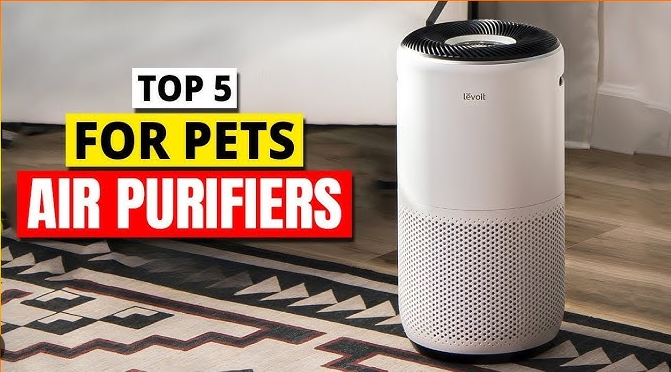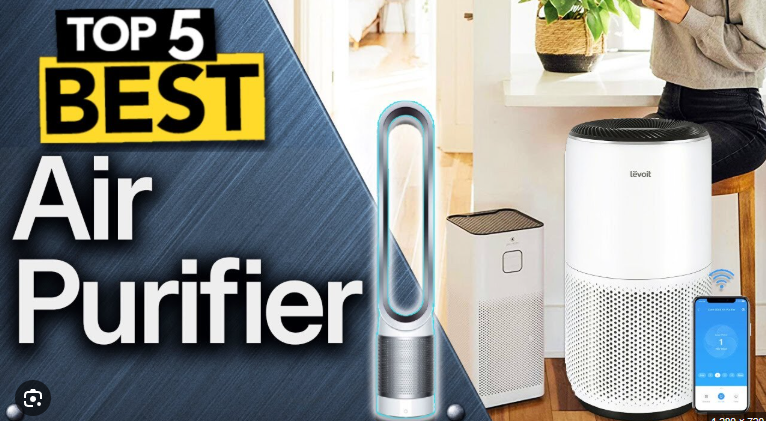With indoor air quality becoming a growing concern due to allergens, pollutants, and even wildfire smoke, selecting the right air purifier is essential for a healthier home or office. This comprehensive air purifier buying guide serves as your ultimate resource for navigating the world of air purifiers in 2025. Whether you’re combating pet dander, dust, or odors, this best air purifier guide will help you make an informed decision. We’ll cover key factors to consider, air purifier setup, how to use an air purifier, air purifier maintenance, and tips to ensure you get the most from your device. For more detailed insights, visit our air purifier resource page.
An air purifier can remove up to 99.97% of airborne particles, including pollen, mold spores, and smoke, depending on its filtration system. With countless models available, from compact units to whole-home solutions, choosing the right one involves evaluating room size, filtration type, and features like smart controls. This guide breaks down the essentials to help you find the perfect air purifier for your needs.
Why Invest in an Air Purifier?
An air purifier improves indoor air quality by filtering out harmful particles and pollutants, offering relief for allergy sufferers, asthma patients, or anyone seeking fresher air. Benefits include reduced respiratory symptoms, fewer allergens, and odor elimination in kitchens or pet-heavy homes. In 2025, advanced models also tackle volatile organic compounds (VOCs) from cleaning products and wildfire smoke, which can linger indoors.
For air purifier safety, choose models certified by AHAM or ENERGY STAR to ensure low ozone emissions and energy efficiency. Proper air purifier setup and air purifier maintenance are critical for performance, while understanding how to use an air purifier maximizes its effectiveness. This air purifier buying guide will walk you through these steps to ensure you select a reliable, efficient unit.

Key Factors to Consider When Buying an Air Purifier
Choosing the right air purifier requires evaluating several factors to match your space and needs. Here’s what to prioritize:
1. Room Size and Clean Air Delivery Rate (CADR)
The Clean Air Delivery Rate (CADR) measures how quickly an air purifier removes smoke, dust, and pollen. Aim for a CADR that delivers 4-5 air changes per hour (ACH) for your room size. To calculate, multiply your room’s square footage by 0.67 for a rough CADR estimate. For example:
- Small rooms (100-300 sq. ft.): 70-200 CFM
- Medium rooms (300-600 sq. ft.): 200-400 CFM
- Large rooms (600+ sq. ft.): 400+ CFM
Check the manufacturer’s room size rating, verified by AHAM, to ensure coverage. For whole-home use, consider multiple portable air purifier units or HVAC-integrated systems.
2. Filtration Technology
The heart of any air purifier is its filter. Here are the main types:
- True HEPA: Captures 99.97% of particles as small as 0.3 microns, ideal for allergens and dust. Look for “True HEPA” certification, not “HEPA-like.”
- Activated Carbon: Removes odors and VOCs, perfect for kitchens or smoky environments.
- UV-C Light: Neutralizes bacteria and viruses but requires sufficient exposure time and ozone-free certification.
- Ionizers: Enhance particle capture but may produce trace ozone; opt for CARB-certified models.
Most top models combine HEPA with carbon for comprehensive cleaning. For specialized needs, like pathogen control, UV-C or PECO technology may be worth considering.
3. Noise Levels
Noise is critical, especially for bedrooms or offices. Look for models under 50 decibels on low settings, with 25-30 decibels ideal for sleep. Many units offer sleep or auto modes to minimize noise while maintaining performance. Check reviews for real-world noise feedback, as manufacturer specs can vary.
4. Energy Efficiency and Operating Costs
Most air purifiers use 20-100 watts, with ENERGY STAR models being the most efficient. Operating costs include electricity (typically $20-$50/year) and filter replacements ($20-$200/year). Washable pre-filters reduce costs, while long-life HEPA filters (6-12 months) save money. Check filter prices before buying, as some premium models have costly replacements.
5. Portability and Design
A portable air purifier (5-20 pounds) is ideal for moving between rooms. Compact models fit small spaces, while larger units with wheels suit open areas. Consider aesthetics—sleek designs blend into modern decor. For small spaces, units under 15 inches wide are best.
6. Smart Features and Ease of Use
Modern air purifiers offer app connectivity, air quality sensors, and auto modes for hassle-free operation. Smart features let you monitor filter life, PM2.5 levels, or schedule run times. Simple controls are crucial for shared spaces like offices. For air purifier tips, look for models with child locks for family safety.
7. Air Purifier Safety
Ensure air purifier safety by choosing units certified by UL, ETL, or CARB to avoid ozone emissions, which can irritate lungs. Avoid older ionizers or UV models without ozone-free certification. Stable designs and proper cord management prevent workplace hazards.
Top Air Purifier Recommendations for 2025
While this air purifier buying guide focuses on selection criteria, here are five standout models across categories, based on 2025 performance tests:
- Levoit Vital 200S: Best for small to medium rooms (190 sq. ft.), with True HEPA, carbon, and app control. CADR 240 CFM, 24 decibels, $30-$50 filter costs.
- Coway Airmega 240: Ideal for large rooms (1,000 sq. ft.), with four-stage filtration and ionizer. CADR 350 CFM, 22 decibels, washable pre-filter.
- Blueair Blue Pure 411i Max: Budget-friendly for small spaces (526 sq. ft.), HEPASilent tech. CADR 200 CFM, 27 decibels, $40 filters.
- IQAir HealthPro Plus: Premium for allergies (1,125 sq. ft.), HyperHEPA filtration. CADR 300 CFM, 25 decibels, $100-$200 filters.
- Dyson Purifier Cool TP07: 2-in-1 for medium rooms (290 sq. ft.), HEPA and fan. CADR 200 CFM, 30 decibels, $80 filters.
For detailed reviews, visit our filter maintenance tips page.
Air Purifier Setup and Usage Tips
Proper air purifier setup ensures maximum efficiency:
- Place 1-3 feet from walls, on a flat surface, away from curtains or furniture blocking airflow.
- For portable air purifier models, move to high-pollution areas like kitchens or pet zones.
- Run continuously on low or auto mode for steady filtration; use high mode during cooking or pollen spikes.
To master how to use an air purifier, leverage auto modes for sensor-driven adjustments. Combine with regular vacuuming to reduce surface dust. In humid climates, pair with a dehumidifier to prevent mold. For more air purifier tips, ensure proper ventilation to complement purification.
Air Purifier Maintenance and Troubleshooting
Regular air purifier maintenance extends lifespan and performance:
- Pre-Filter: Vacuum or rinse (if washable) every 2-4 weeks to trap large particles.
- HEPA/Carbon Filters: Replace every 6-12 months, depending on usage and air quality ($20-$200).
- Exterior Cleaning: Wipe with a dry cloth monthly; avoid water near electronics.
For air purifier cleaning, never submerge components. For air purifier troubleshooting:
- Reduced Airflow: Check for clogged filters; clean or replace as needed.
- Persistent Odors: Replace carbon filters or check for source pollutants.
- Beeping/Errors: Unplug for 5 minutes to reset; consult manual for sensor issues.
Proper maintenance can reduce allergens by up to 90%, per testing data.

Additional Air Purifier Buying Tips
Maximize your air purifier investment with these air purifier tips:
- Match to Needs: Allergy sufferers prioritize HEPA; odor control needs carbon; pathogen concerns may benefit from UV-C.
- Check Certifications: AHAM Verifide for CADR accuracy; CARB for ozone safety.
- Budget Wisely: Balance upfront cost ($50-$500) with filter expenses ($20-$200/year).
- Environment: Seal windows during high pollen or smoke days; use in conjunction with HEPA vacuums.
- Smart Features: Apps and sensors save time in busy households or offices.
For humid areas, consider models with dehumidifying modes. In family homes, opt for stable designs with child locks. For detailed maintenance advice, visit our clean air guide.
Common Mistakes to Avoid When Buying an Air Purifier
Steer clear of these pitfalls:
- Undersizing: Choosing a model with insufficient CADR for your room size reduces effectiveness.
- Ignoring Noise: High decibels disrupt sleep or work; test in-store if possible.
- Overlooking Costs: Cheap units may have pricey filter replacements.
- Neglecting Safety: Avoid non-certified ionizers or UV models that may emit ozone.
- Skipping Maintenance: Irregular air purifier cleaning lowers efficiency and lifespan.
Conclusion: Find Your Perfect Air Purifier with Confidence
Choosing the right air purifier can transform your indoor environment, reducing allergens, odors, and pollutants for a healthier space. This air purifier buying guide equips you with the knowledge to evaluate room size, filtration types, noise, and costs. Prioritize proper air purifier setup, master how to use an air purifier, and commit to regular air purifier maintenance for optimal results. From budget-friendly models to premium options, there’s an air purifier for every need. Start your journey to cleaner air today—explore more tips at our air purifier resource hub.